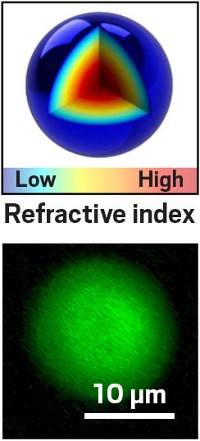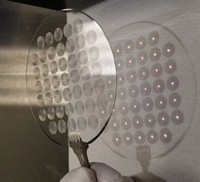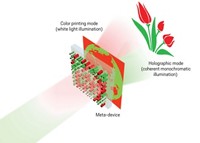Advertisement
Grab your lab coat. Let's get started
Welcome!
Welcome!
Create an account below to get 6 C&EN articles per month, receive newsletters and more - all free.
It seems this is your first time logging in online. Please enter the following information to continue.
As an ACS member you automatically get access to this site. All we need is few more details to create your reading experience.
Not you? Sign in with a different account.
Not you? Sign in with a different account.
ERROR 1
ERROR 1
ERROR 2
ERROR 2
ERROR 2
ERROR 2
ERROR 2
Password and Confirm password must match.
If you have an ACS member number, please enter it here so we can link this account to your membership. (optional)
ERROR 2
ACS values your privacy. By submitting your information, you are gaining access to C&EN and subscribing to our weekly newsletter. We use the information you provide to make your reading experience better, and we will never sell your data to third party members.
Nanomaterials
A Faster Method For Making Metamaterials
Materials: A simple lithography technique rapidly produces complex nanoscale patterns for novel optical materials
by Katherine Bourzac
September 11, 2014

Nanostructured materials designed to interact with light in exotic ways might lead to a diverse range of new optical devices such as solar-cell coatings, optical computers, and invisibility cloaks. A new fabrication method makes it easier to design and create large sheets of these so-called metamaterials (ACS Nano 2014, DOI: 10.1021/nn504214b).
For possible applications in imaging and telecommunications that use visible or infrared light, researchers have made metamaterials with dense, intricate, nanoscale patterns out of metals and semiconductors. Creating these patterns usually requires slow, expensive techniques such as electron- or ion-beam lithography. Photolithography would be a faster route to these materials, but it often has low resolution and doesn’t yield tightly packed patterns, says Alex Nemiroski, a researcher in the lab of George M. Whitesides at Harvard University. To speed the pace of innovation, researchers need the ability to rapidly prototype and test new metamaterial designs, and companies need rapid, large-area manufacturing processes.
Nemiroski came up with a faster, more versatile method by adapting an existing fabrication technique called shadow lithography, in which a simple stencil, sometimes made from packed nanospheres, blocks deposition of atoms in a physical vapor deposition (PVD) chamber. He thought he could create more complex patterns by changing the position of the atom source many times during deposition.
In the new method, called shadow-sphere lithography, the researchers start by dropping 1-µm spherical polystyrene pellets in water, allowing static electricity to pack the spheres together. The researchers then scoop the spheres onto a surface, such as a silicon wafer, and let the stencil dry. They can make the spheres smaller, if desired, by etching them once they’re on the wafer. The researchers then place the wafer inside a PVD chamber to start depositing the material of choice. The spheres block the path of some atoms, while others land on the wafer. By changing the angle of the deposition source during the process, the researchers can start with one shadow pattern and then repeat deposition with different ones to create the desired nanoscale structures.
The Harvard team used the technique to create a variety of patterns using copper, titanium, and other metals. Features in these patterns could have a radius of curvature as small as 10 nm. Nemiroski says that other materials including semiconductors and dielectrics can also be used.
Software designed by Nemiroski controls the process, automatically generating a sequence for moving the deposition source and specifying the sphere size that will create a given pattern. The software can also predict the optical properties of the final material.
“It had never occurred to me that you could create the complexity of structures that they do using these self-assembled colloids,” says Paul V. Braun, a materials scientist at the University of Illinois, Urbana-Champaign, who also works on novel lithography methods for making metamaterials. Braun says that the measured optical properties of the metamaterials match those predicted by the Harvard software, suggesting that the fabrication technique is solid. Still, Braun notes that the polystyrene spheres aren’t free of defects, and they don’t pack perfectly, leading to flaws in the resulting materials. Nemiroski says the Harvard group is now addressing these issues.





Join the conversation
Contact the reporter
Submit a Letter to the Editor for publication
Engage with us on Twitter